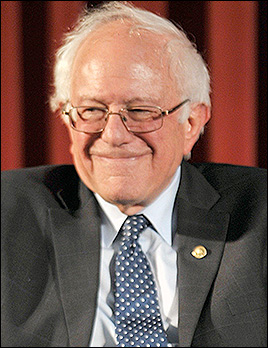By Jim Ellis

2020 Presidential candidate Sen. Bernie Sanders takes the lead in California
With two months to go before the Golden State primary is conducted but less than a month before early voting begins there on Feb. 3, the possibility of multiple candidates receiving portions of the state’s 415 first ballot delegates is becoming very real.
Sanders leads Warren, Biden, and Buttigieg by a 24-21-20-11 percent spread. Under party rules, a candidate must secure 15 percent of the statewide vote to earn at-large delegates. Therefore, Buttigieg must work to gain strength during the remaining time in order to reap the all-important mandated delegate commitments.
If he were to obtain 15 percent, and the others remained constant with these present percentages, the at-large delegate division would break 43 for Sanders and 38 for Warren, while Biden would earn 36 and Buttigieg 27 votes.
Should only the top three qualify for at-large delegate apportionment, Sanders would earn 53 votes, Warren 46, and Biden 45. Therefore, Buttigieg qualifying would significantly change the state and overall race because the large California delegation will be a major presence at the Democratic National Convention.
Scoring at-large delegate commitments is not the only way to earn votes, however. A larger total of 271 delegates will be awarded through the state’s 53 congressional districts. Each district, based upon its historical support performance for Democratic candidates, is awarded between 4 and 7 delegates, inclusive.
To earn district delegate votes, candidates must exceed the 15 percent threshold in each particular CD. Therefore, should a candidate, say Mayor Buttigieg for example, fall short of the 15 percent figure statewide he could still earn delegate votes in every congressional district where he reaches or exceeds the minimum 15 percent threshold.
Mayor Buttigieg is not the only candidate who could score a significant number of district delegate votes. While the second-tier candidates may not reach the 15 percent at-large threshold, they could conceivably have a strategy to string delegate votes together by hitting 15 percent in targeted districts.
The Capitol Weekly poll finds businessman Andrew Yang in fifth position with seven percent statewide. Yang could be a factor in the delegate count because he is the leading candidate, with 24 percent, among Asian voters. And, with 13 California congressional districts having large Asian/Pacific Islander populations, targeting those districts could conceivably earn him more than 20 delegate votes, for example.
Former New York City Mayor Michael Bloomberg is a point behind Yang in the statewide poll, and Sen. Amy Klobuchar (D-MN) is two back. Therefore, they could reasonably implement the CD targeting strategy as well.
While polling indicates that the top candidates are locked in four-way battles in the first two voting states of Iowa and New Hampshire, and Super Tuesday coming right after the First Four states vote at the end of February, several candidates could be in position to earn a substantial number of delegate votes.
That would set the stage to lead the candidates perhaps into a multiple roll call convention for the first time since 1952, and potentially a multiple candidate open convention that hasn’t happened since then-congressman and future president James Garfield was nominated at the 1880 Republican convention.
